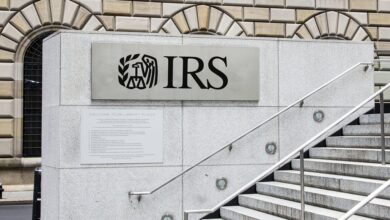U.S. Commerce Department to Publish GDP Data on Blockchain for Transparency

The U.S. Commerce Department is preparing to release official economic statistics—including gross domestic product (GDP)—on a blockchain platform, in a first-of-its-kind move aimed at boosting transparency and data security.
The initiative was announced by Commerce Secretary Howard Lutnick during an Aug. 26 White House Cabinet meeting, marking a significant shift in how the U.S. government plans to share and safeguard its most critical economic information.
Why Blockchain for GDP Data?
Traditionally, the Bureau of Economic Analysis (BEA) publishes GDP figures through its website and official reports. By leveraging blockchain technology, the department will create an immutable, time-stamped record of economic data—ensuring it cannot be altered after release.
“Blockchain offers a new standard for transparency,” Lutnick said. “Our goal is to ensure that when the American people and global markets see GDP data, they know it is secure and verifiable.”
Supporters argue the move could strengthen trust in U.S. statistics, particularly at a time when the accuracy and reliability of government-released economic data are under increasing scrutiny.
Questions Still Unanswered
Despite the bold announcement, key details remain unclear:
- Which blockchain network will be used? Options range from public chains like Ethereum to a private, government-run ledger.
- When will it launch? No timeline has been provided for the first blockchain-published GDP report.
- What data will be included? Analysts are waiting to see whether only headline GDP figures will be published, or if detailed datasets will also be shared, enabling researchers and investors to perform real-time verification.
Industry Reactions
The crypto and blockchain industry has largely welcomed the development, seeing it as strong validation of blockchain’s potential beyond cryptocurrencies. Publishing GDP data on-chain could:
- Prevent manipulation or tampering of official statistics
- Improve accessibility for the public and markets
- Enable developers to build automated financial tools that respond instantly to verified data
However, experts caution that governance, cybersecurity, and scalability challenges could pose hurdles if not addressed properly.
What’s Next for Blockchain in Government?
The BEA has yet to release technical documentation on how the blockchain system will function. Analysts expect updates in the coming months, potentially including pilot programs, auditing standards, and data access protocols.
If successful, the move could pave the way for other U.S. agencies to adopt blockchain for publishing critical reports such as employment data, inflation rates, and trade balances. If it fails, it may underscore the complexities of deploying distributed ledger technology at scale within government operations.
Either way, the Commerce Department’s decision highlights Washington’s growing openness to emerging technologies, with blockchain now positioned as a potential cornerstone for the future of public data transparency.





